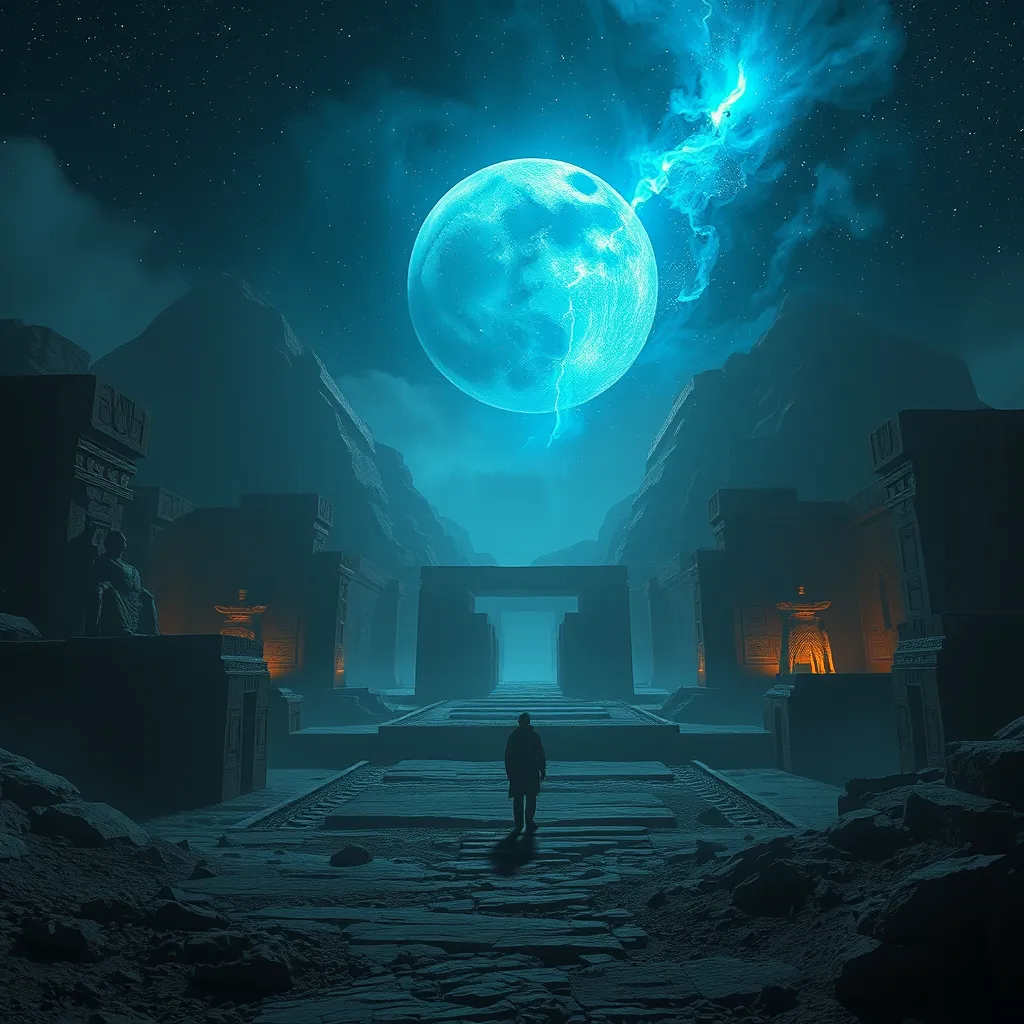The Duat: Beyond the Veil of Reality
I. Introduction to the Duat
The Duat holds a prominent place in ancient Egyptian mythology and serves as a crucial element in understanding the civilization’s beliefs about life after death. Defined as the realm of the afterlife, the Duat was seen as both a physical and spiritual space where the deceased would navigate complex challenges to attain eternal life. This article aims to explore the rich symbolism of the Duat and its cultural impact on ancient Egyptian society.
II. Historical Context of the Duat
The concept of the Duat has its origins in ancient Egyptian beliefs, deeply embedded in their cosmology and religion. It appears in various texts, notably the “Book of the Dead,” which served as a guide for the deceased on their journey through the afterlife. Over the centuries, the portrayal of the Duat evolved, influenced by different dynasties and shifting cultural contexts.
Key historical figures, such as Pharaohs, often sought to align themselves with the deities of the Duat to ensure a favorable judgment after death. The evolution of the Duat’s significance can be seen through the artifacts and tombs that reflect changing beliefs about mortality and the afterlife.
III. The Geography of the Duat
Descriptions of the Duat in ancient texts paint a vivid picture of a complex underworld filled with various landscapes. It is often depicted as a vast, dark expanse where the sun god Ra would navigate through each night, symbolizing the cycle of death and rebirth.
- Landscapes: The Duat contains rivers, deserts, and fields, all representing different trials for the soul.
- Locations: Key sites in the Duat include the Hall of Judgement and the Field of Reeds, where souls aspire to reach for eternal peace.
The geography of the Duat is significant as it mirrors the challenges the deceased faced, emphasizing the journey of the soul through darkness toward enlightenment and resurrection.
IV. Deities and Mythological Figures of the Duat
Several major gods are associated with the Duat, each playing a vital role in the afterlife. Among these, Osiris and Anubis are the most prominent.
- Osiris: As the god of the afterlife, Osiris judged the souls of the deceased, determining their fate in the afterlife.
- Anubis: The god of embalming and funerary rites, Anubis guided souls through the Duat and protected them during their journey.
In addition to these major deities, there are lesser-known figures such as Thoth, the god of wisdom, who recorded the outcomes of the judgments, and Ammit, the devourer of the unworthy souls. Each of these figures contributes to the rich tapestry of Duat mythology.
V. The Journey Through the Duat
The journey through the Duat begins with the process of death, where the soul separates from the body. This transition is fraught with challenges, as the deceased must navigate through various trials to prove their worthiness.
- Judgment: Upon entering the Duat, the deceased faces the judgment of Osiris, where their heart is weighed against the feather of Ma’at, representing truth and justice.
- Monsters: The path is also lined with monsters and obstacles that test the courage and virtue of the soul.
Key rituals, such as mummification and the burial of funerary items, were crucial in preparing the deceased for this journey. These practices were believed to provide protection and aid in the navigation of the Duat.
VI. Symbolism and Themes in the Duat
The Duat is rich in symbolism, representing not only the afterlife but also transformation and rebirth. It embodies the duality of existence—life, death, and the continuum of the afterlife.
- Transformation: The journey through the Duat signifies the transformation of the soul from the mortal realm to eternal existence.
- Duality: The interplay between light and darkness in the Duat reflects the balance between good and evil, life and death.
Moreover, the moral and ethical lessons derived from Duat mythology emphasize the importance of living a just life, as one’s actions in the mortal world directly impact their fate in the afterlife.
VII. The Duat in Modern Culture
In contemporary times, the Duat continues to influence literature, art, and popular media. Its rich mythology has inspired a plethora of works that explore themes of death, the afterlife, and spiritual journeys.
- Literature: Authors often draw upon Duat themes to reflect on human existence and the afterlife.
- Film: Movies and shows that delve into ancient Egyptian mythology frequently reference the Duat, portraying its complexities and mysteries.
There has also been a resurgence of interest in ancient Egyptian spirituality, as modern practitioners seek to understand and connect with these ancient beliefs.
VIII. Conclusion
The Duat represents a fascinating aspect of ancient Egyptian culture that goes beyond mere mythology. It provides profound insights into their understanding of life, death, and the journey of the soul. The enduring legacy of the Duat invites us to reflect on our own beliefs about existence and the afterlife.
This exploration of the Duat encourages further inquiry into ancient Egyptian beliefs and their relevance in contemporary society. As we delve deeper into these ancient narratives, we may uncover valuable lessons about our own lives and mortality.





